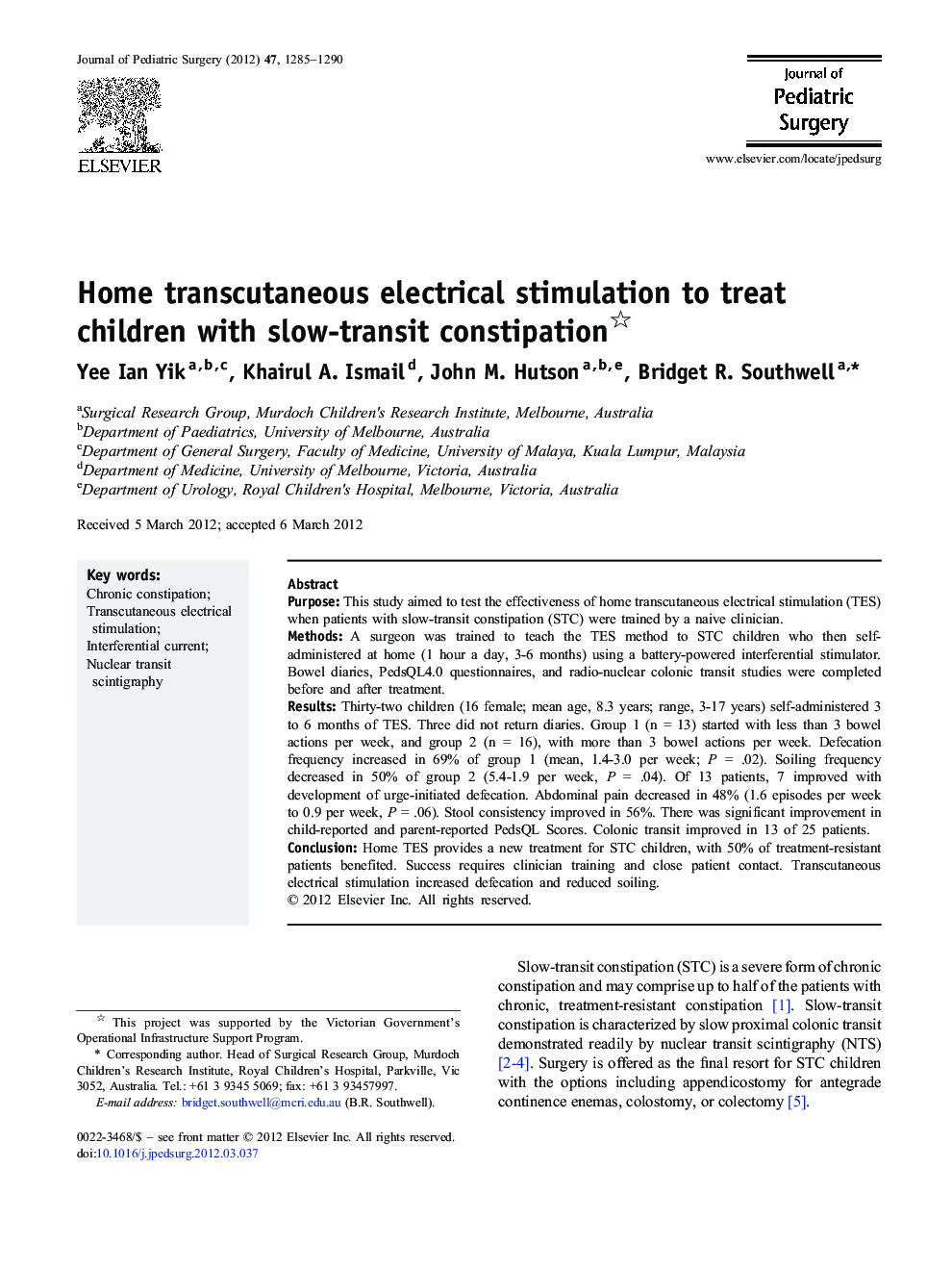| Article ID | Journal | Published Year | Pages | File Type |
|---|---|---|---|---|
| 4157223 | Journal of Pediatric Surgery | 2012 | 6 Pages |
PurposeThis study aimed to test the effectiveness of home transcutaneous electrical stimulation (TES) when patients with slow-transit constipation (STC) were trained by a naive clinician.MethodsA surgeon was trained to teach the TES method to STC children who then self-administered at home (1 hour a day, 3-6 months) using a battery-powered interferential stimulator. Bowel diaries, PedsQL4.0 questionnaires, and radio-nuclear colonic transit studies were completed before and after treatment.ResultsThirty-two children (16 female; mean age, 8.3 years; range, 3-17 years) self-administered 3 to 6 months of TES. Three did not return diaries. Group 1 (n = 13) started with less than 3 bowel actions per week, and group 2 (n = 16), with more than 3 bowel actions per week. Defecation frequency increased in 69% of group 1 (mean, 1.4-3.0 per week; P = .02). Soiling frequency decreased in 50% of group 2 (5.4-1.9 per week, P = .04). Of 13 patients, 7 improved with development of urge-initiated defecation. Abdominal pain decreased in 48% (1.6 episodes per week to 0.9 per week, P = .06). Stool consistency improved in 56%. There was significant improvement in child-reported and parent-reported PedsQL Scores. Colonic transit improved in 13 of 25 patients.ConclusionHome TES provides a new treatment for STC children, with 50% of treatment-resistant patients benefited. Success requires clinician training and close patient contact. Transcutaneous electrical stimulation increased defecation and reduced soiling.
